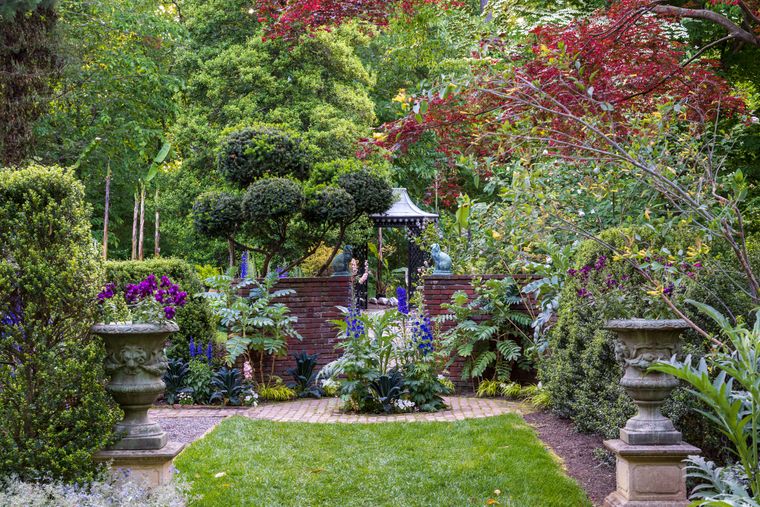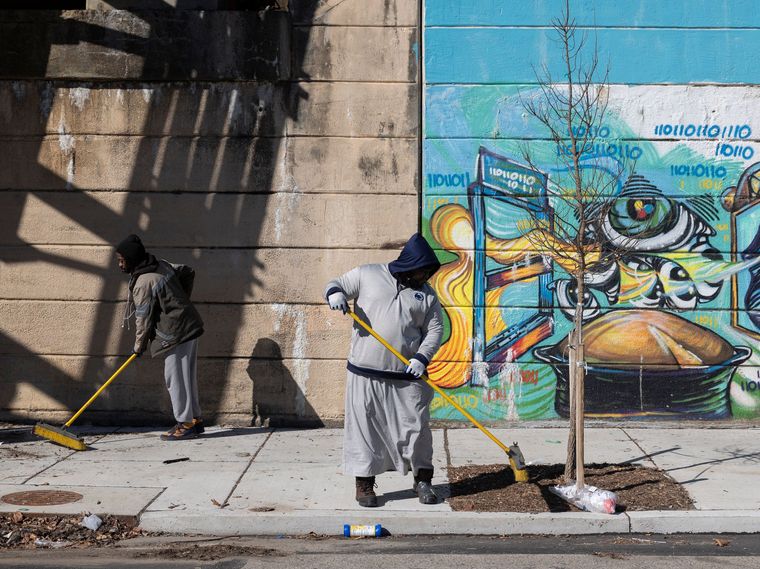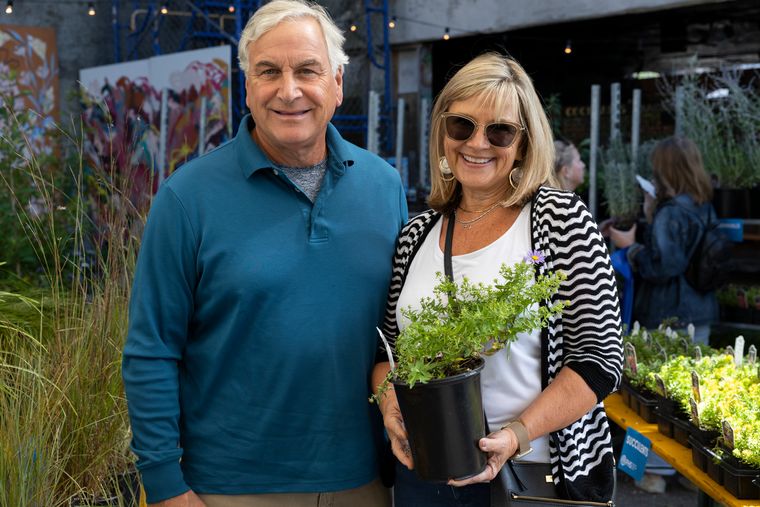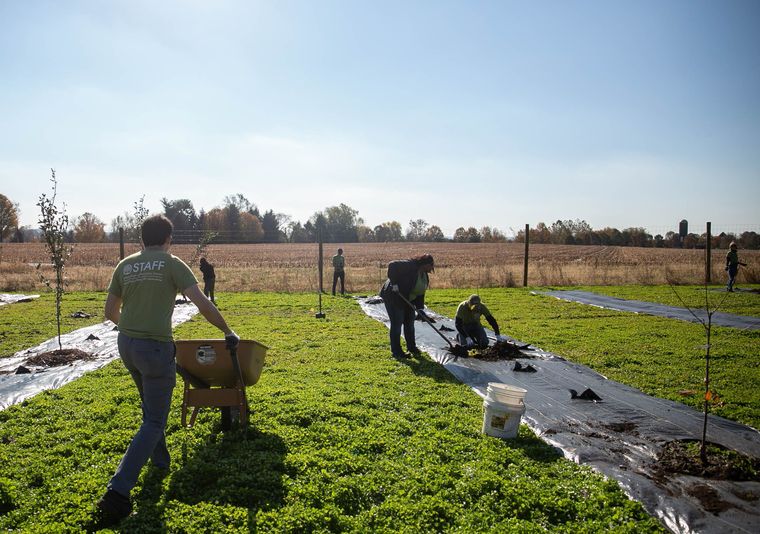



Top New Year’s Resolutions for Plant Lovers: Tips for Beginners and Experienced Gardeners
plant care
sustainable gardening
gardening projects

By Andrew Bunting, PHS VP of Horticulture
As we kick off 2025, many of us create lists of goals and New Year’s resolutions for the coming year. Creating a list of what you would like to do in the garden for the coming year is a great wintertime activity. Here are a few ideas you might want to consider for the new year.
Get gardening tips you can use year-round delivered to your inbox!

How to Start a Garden
For novices and expert gardeners alike, starting a new garden is one of the most exciting of all gardening activities. This could be a small spot on your property or renovating a larger area and it can include the addition of containers and window boxes too.
Quick Steps to Starting a Garden
-
Decide where you want the garden to be.
-
Assess the conditions of the site, including the type of soil, access to water, sunlight conditions, etc.
-
Confirm what type of garden you want, such as sun garden, woodland garden, pollinator garden, window box or containers, or a vegetable garden.
-
Think about what attributes do you want your garden to have such as producing vegetables, attracting pollinators, producing cut flowers, have ecological functions, or creating a low maintenance garden
-
Make a garden plan. Take measurements of the garden and include any existing plants.
-
Design the garden. Go through books and on-line resources and make a list of plants you want to add to the garden. Once you have a list, start adding them to the plan so you have a guide once you start planting your garden.
-
In the spring, start acquiring the plants on your list. Try buying from your local nursery and for more specialized plants you might buy them from online sources.
-
In April or May, you can start planting your garden. Not all the plants have to be planted at once, but as you find plants for your garden you can add them.

Houseplant Gardening for Beginners
A resolution for the new year could be to simply start gardening. For city dwellers, the only way to start gardening might be to start with houseplants. In the last few years, houseplants have had a renaissance and have become increasingly popular. Here are some of the easiest houseplants to grow:
-
Jade plant, Crassula ovata - This succulent shrub is “tough as nails”. It requires minimal watering and should be kept near a sunny window. It is grown for its shiny succulent leaves and clusters of white flowers.
-
Snake plant or mother-in-laws-tongue, Dracaena trifaciata - This houseplant has upright sword-like leaves. Depending on the selection it can have green leaves or variegated leaves with yellow, white or silver patterns
-
Spider plant, Chlorophytum comosum - The spider plant has arching leaves, as well as arching stems with small spider-like plants, hence the name “spider plant”. There are selections that are all green and others with leaves that are white and green variegated.
-
Golden pothos, Epipremnum aureum - This can be grown as a vining plant or a spilling plant. It is characterized by yellow marbled variegated leaves that are heart-shaped. It can grow six to eight feet but could have vining branches much longer.
-
ZZ plant, Zamioculcas zamiifolia - The ZZ plant has become very popular and coveted in houseplant circles. Black Raven is a selection for its black foliage. At maturity it can reach 4-5’ tall with an equal spread. It has upright branches with green semi-succulent leaves.

Create a Sharing Mindset
One of the greatest joys of being a gardener is sharing your knowledge, sharing produce with your friends or a local food bank and becoming involved in the gardening community such as a garden club, local horticultural society, community garden or plant society. Here are some ways you might engage others:
-
Encourage and mentor beginning gardeners and lend your expertise to those who are “plant curious”
-
Start vegetable gardening at home and donate and share produce with your neighbors or a food bank.
-
Learn how to propagate plants from seed, division and cuttings and share plants throughout your community and at your community garden.
-
Volunteer to help in a local public garden, at a school or at a community garden
-
Get involved with the local garden community. Throughout the city and suburbs there are hundreds of community gardens. Many municipalities have public gardens. There are local garden clubs and many, many plant societies that you can join if you love a particular kind of plant including the North American Rock Garden Society, Hardy Plant Society, Begonia Society, Cactus and Succulent Society.
Mingle with seasoned gardeners and the plant curious at the Philadelphia Flower Show!

Incorporate sustainability into your life
As you dive into a year filled with enriching garden activities, don’t forget to incorporate sustainable practices into the mix.
-
Make a pollinator garden or add pollinator plants such as Asclepias tuberosa, butterfly milkweed or the mountainmint, Pycananthemum muticum, to your garden.
-
Reduce your lawn. A smaller lawn reduces the need for fossil fuels to maintain it. This can be as simple as extending your existing garden to creating new garden spaces.
-
Go electric/cordless! There are many excellent electric alternatives for lawn mowers, blowers, weed whips, hedge trimmers and even chainsaws.
-
Add native plants with ecological functions. In addition to pollinator plants add plants that are good seed sources such as the purple coneflower, Echinacea purpurea, or the giant rudbeckia, Rudbeckia maxima. Add trees and shrubs with an abundance of fruit to be a seed source for native songbirds such as the red fruited flowering dogwood, Cornus florida or the chokeberry, Aronia arbutifolia ‘Brilliantissima.
-
Just “Leave the Leaves.” This is a movement to keep fallen leaves on your property as garden mulch. These overwintering leaves are important for larvae of native insects as well as protection for the dozens of species of ground nesting bees.
-
Create habitat! In your garden beds plant a mixture of trees, vines, shrubs and perennials. This mix will create a good habitat for nesting birds and native mammals. It will also provide pollen and food source for native insects and birds alike.
-
Be part of the ecosystem. See your property as part of the local system. Be a great steward to your property. Consider getting certification that acknowledges your efforts around planting native plants or pollinator plants.

The new year is a great time to assess your garden needs and set new goals for the year. It can be as simple as starting to garden with your first house plant or deciding to increase the number of pollinator plants in your garden. Like any list of New Years resolutions, make your list attainable and fun. Pick a few ways you can make your garden more beautiful AND impactful.


